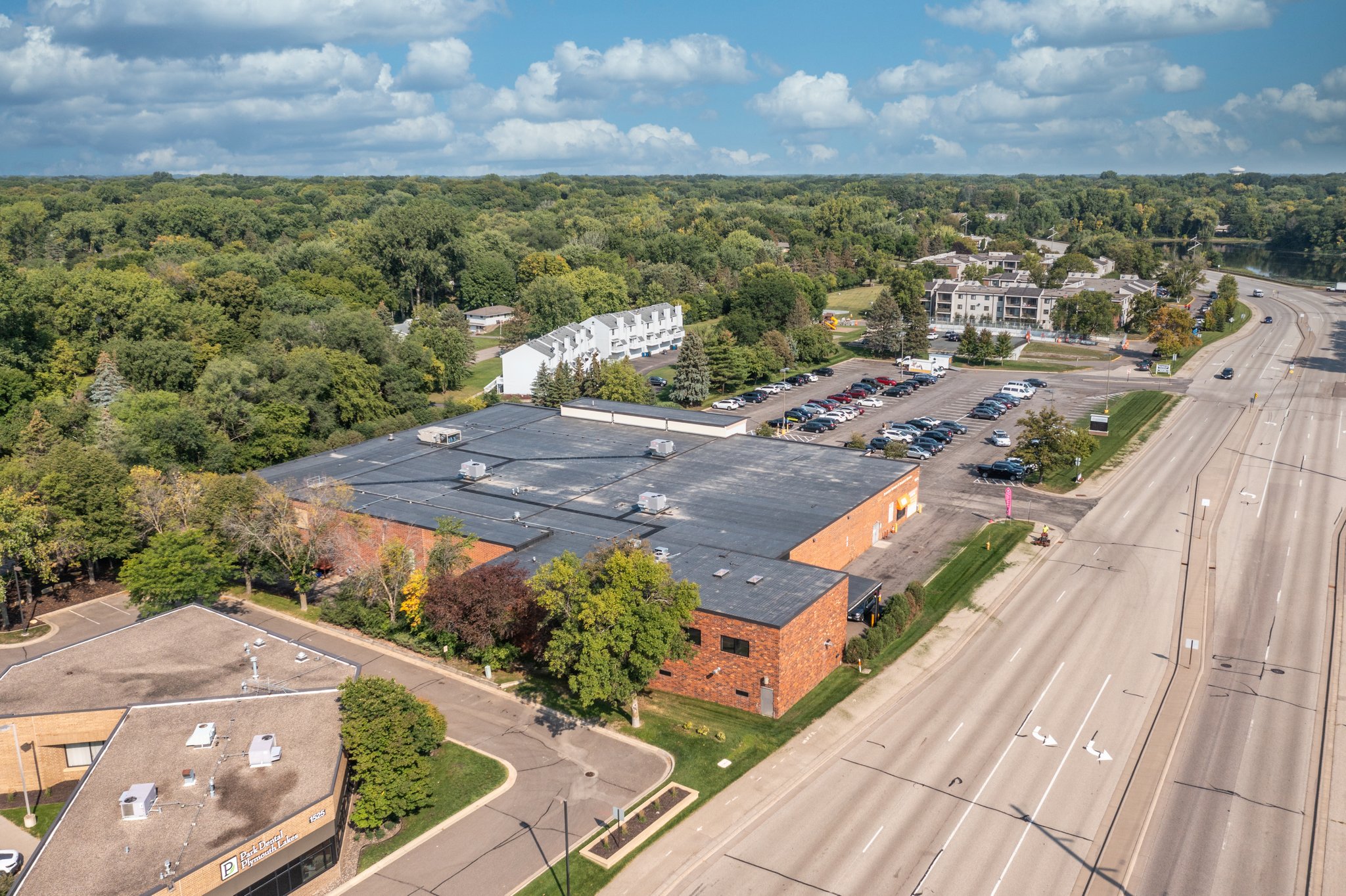Flat Roofs: A Contemporary Choice for Commercial Structures.
Commercial buildings often feature flat roofs, and there’s more to this architectural choice than meets the eye. In this article, we’ll explore the benefits and considerations behind the prevalence of flat roofs in commercial buildings.
Types of Flat Roofs
There are several variations of flat roofs, each with its own unique benefits suitable for different types of commercial buildings.
Built-Up Roof (BUR): A traditional type of flat roof, BUR consists of multiple layers of bitumen and reinforcing fabrics. BUR offers excellent waterproofing and a high level of durability. It’s commonly seen in older buildings and requires regular maintenance.
Modified Bitumen Roof: This type of flat roof uses sheets of modified bitumen—a material similar to BUR but with added polymers for enhanced performance. Modified bitumen roofs are known for their tear-resistance and reflective properties, thus increasing energy efficiency.
Rubber Membrane (EPDM): EPDM is a durable rubber material resembling an inner tube. This type of roof is resistant to damage from sunlight, easy to install, and simple to repair.
PVC and TPO Roofing: Both PVC and TPO are types of thermoplastic roofing. They are highly resistant to fire, punctures, and chemicals. These roofs are known for their durability and energy efficiency, attributed to their heat-reflective and heat-weldable nature.
Spray Polyurethane Foam (SPF): SPF roofs involve spraying a liquid material that expands into foam, creating a solid layer across an existing roof. This type of roof provides excellent insulation and flexibility in managing various roof designs, but is seldom found on Minnesota commercial buildings.
The Advantages of Flat Roofs for Commercial Buildings
Durability and Cost-Efficiency
Flat roofs have gained popularity in the commercial sector for their durability and cost-efficiency. Unlike pitched roofs, flat roofs have a simpler design, reducing the overall construction costs. Additionally, these roofs are typically easier to maintain, making them a cost-effective choice in the long run.
Utilization of Space
One significant advantage of flat roofs is their efficient use of space. Commercial buildings often require rooftop space for HVAC systems, solar panels, or even recreational areas. Flat roofs offer an easily accessible surface, allowing businesses to maximize their use of the available space.
Energy Efficiency and Sustainability
Flat roofs also contribute to the energy efficiency and sustainability of commercial buildings. The expansive surface area of a flat roof allows for the installation of solar panels, which can significantly reduce energy costs and carbon footprints. Moreover, they provide an ideal platform for creating green roofs or rooftop gardens, enhancing the overall sustainability of the building.
Easy Maintenance and Repairs
Maintaining and repairing flat roofs is generally more straightforward compared to pitched roofs. The accessibility of flat roofs makes routine inspections and maintenance tasks more manageable, saving both time and money. This is especially crucial for commercial buildings or residences, where disruption to work or living space within the building is not acceptable.
Versatility in Design
Flat roofs offer versatility in architectural design. They provide architects and designers with the freedom to create modern, sleek, and aesthetically pleasing commercial buildings. This flexibility in design can be a significant selling point for businesses looking to make a statement with their premises.
Drainage Considerations
While flat roofs offer numerous advantages, proper drainage is crucial to prevent water accumulation. Ponding water can lead to structural damage and leaks. Therefore, it’s imperative to install effective drainage systems to ensure that flat roofs perform optimally.
Weather Considerations
In regions prone to heavy snowfall or rainfall, flat roofs may require additional maintenance to prevent water and snow buildup. Proper insulation and regular inspections are essential to avoid potential issues.
Common Misconceptions About Flat Roofs
Despite the numerous benefits of flat roofs, there are several misconceptions that may deter businesses from opting for this type of roofing. Here are some common myths and the facts that debunk them:
Myth: Flat roofs are prone to leaks.
Fact: When installed correctly with a proper drainage system, flat roofs can be just as leak-proof as pitched roofs.
Myth: Flat roofs do not last long.
Fact: With regular maintenance and proper installation, flat roofs can last just as long as pitched roofs.
Myth: Flat roofs are not energy-efficient.
Fact: Flat roofs offer excellent insulation properties and allow for the installation of solar panels, making them highly energy-efficient.
Overall, it’s essential to consult with a professional roofing company to address any concerns and misconceptions about flat roofs before making a decision for your commercial building. The team at Mint Roofing is always available to answer any questions and provide expert guidance on flat roofing solutions.
Conclusion
In summary, flat roofs are a popular choice for commercial building design due to their cost efficiency, space utilization, energy efficiency, easy maintenance, and design versatility.
Overall, when designed and maintained correctly, flat roofs offer an excellent solution for modern commercial structures, catering to both functional and aesthetic requirements.
Mint Roofing – Minneapolis/St. Paul’s Commercial Building Roofing Experts
At Mint Roofing, we specialize in commercial roofing solutions for businesses in the Minneapolis/St. Paul area. From installation to maintenance and repairs, our team of experts is dedicated to providing high-quality, reliable services for all types of commercial roofs.
Contact us today to learn more about durable, cost-efficient, and visually appealing flat roofs for your next building project. Our team is ready to assist you with any questions and concerns, ensuring that your roof is in Tip-Top condition for years to come.
FAQs
Q: What types of materials are commonly used for flat roofs?
A: Common materials used for flat roofs include Built-Up Roofs (BUR), Modified Bitumen, TPO (Thermoplastic OlPDM (Ethylene Propylene Diene Monomer), and Spray Polyurethane Foam (SPF).
Q: How long does a flat roof typically last?
A: With proper maintenance and installation, flat roofs can last up to 25 years or more. Regular inspections and prompt repairs can also extend the lifespan of a flat roof.
Q: Is a flat roof able to withstand heavy snowfall or rainfall?
A: Yes, with proper insulation and regular maintenance, flat roofs can withstand heavy snowfall or rainfall. However, it’s important to ensure adequate drainage systems are in place to prevent water accumulation.
Q: Can I install solar panels on a flat roof?
A: Yes, flat roofs are ideal for installing solar panels due to their expansive surface area. This can significantly reduce energy costs and carbon footprints for your commercial building.
Q: Are flat roofs more expensive than pitched roofs?
A: The initial cost of installing a flat roof may be slightly higher than a pitched roof. However, flat roofs offer long-term cost savings through energy efficiency, easy maintenance, and potential space utilization for solar panels or green roofs.
Overall, the long-term benefits of flat roofs can outweigh any initial cost differences. So, if you are considering a new roof installation for your commercial building in the Minneapolis/St. Paul area, contact Mint Roofing today.



